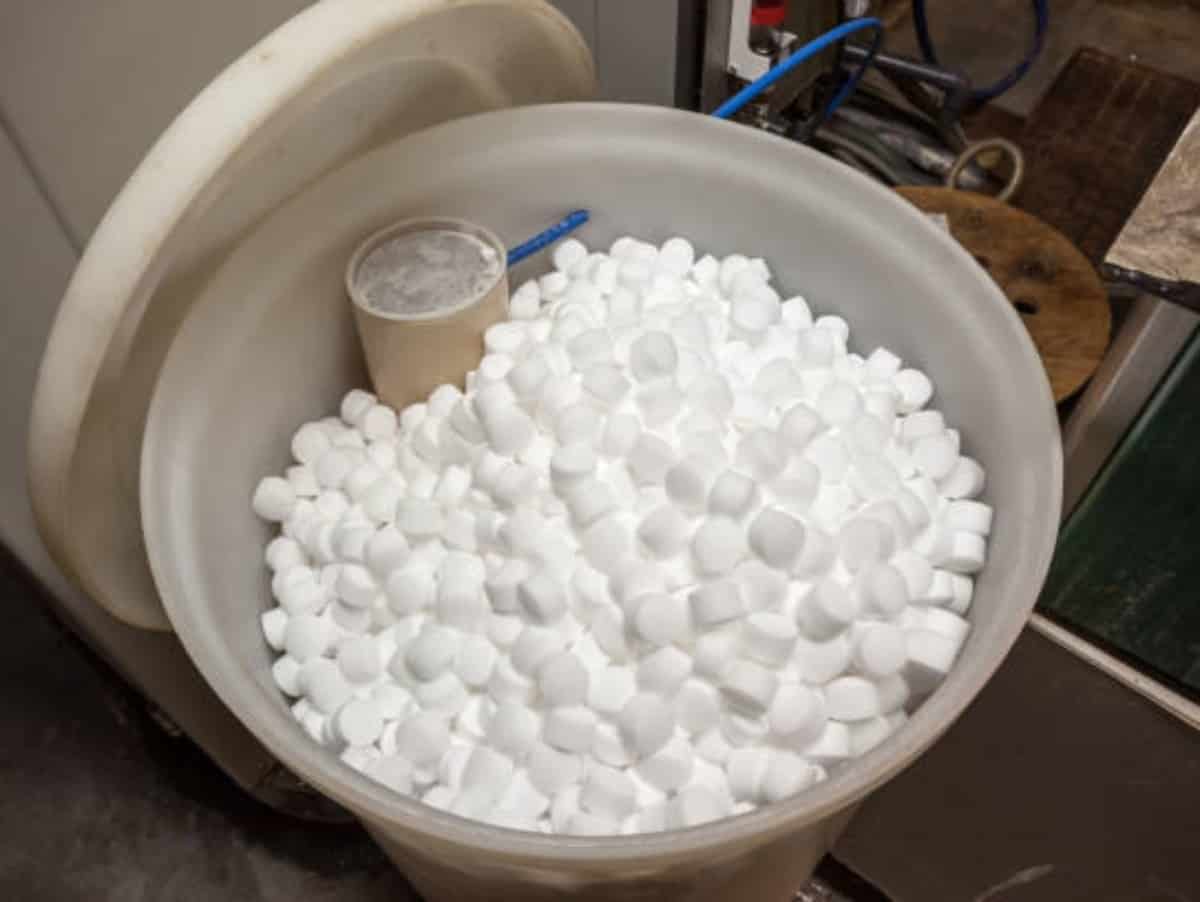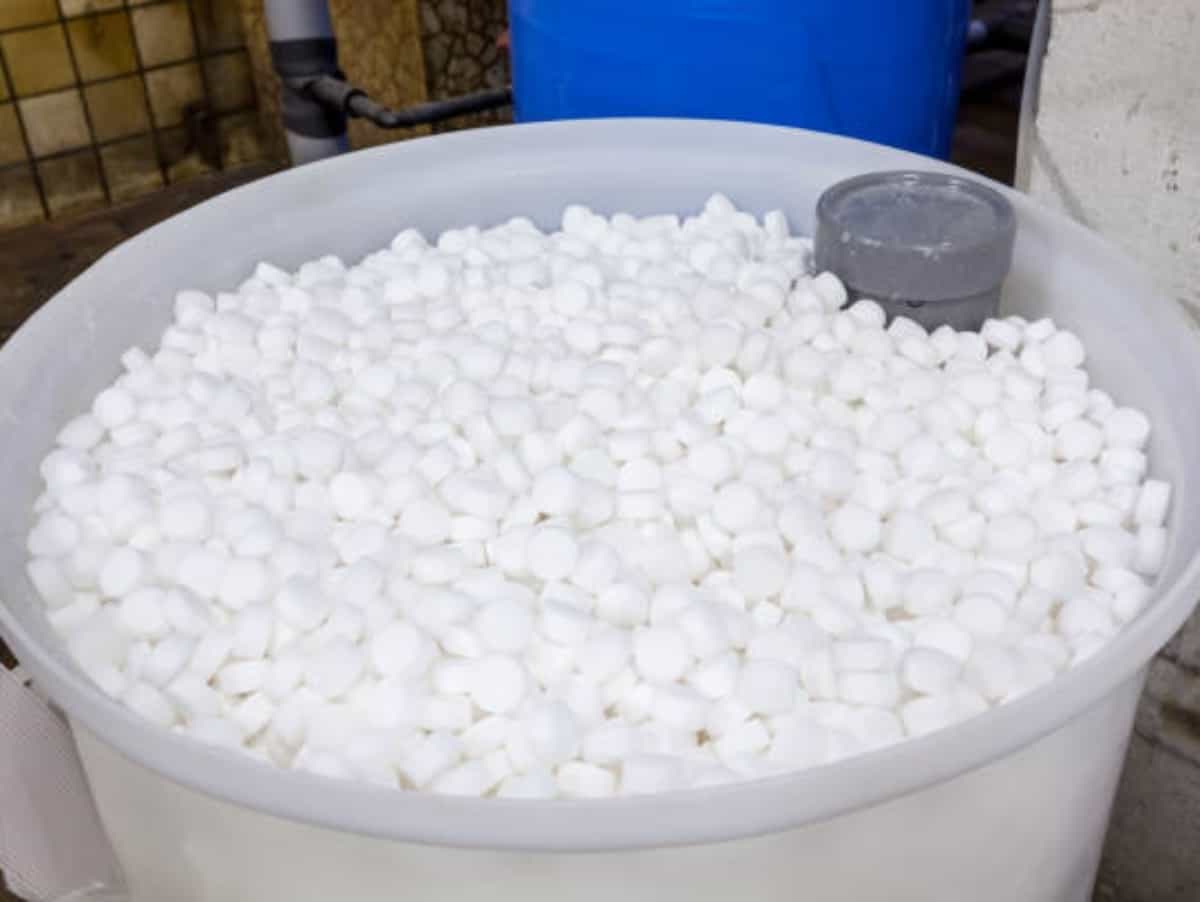If you have a water softener, part of the maintenance includes cleaning it. However, if you’re confused or needing a guide on how to clean water softener, you’ve come to the right place. Here are tips and tricks to make sure you are cleaning your water softener correctly.
Cleaning your salt water brine might not be at the top of your to-do list for the weekend, but it should be. Keeping regular maintenance of your water softener can help extend its life.
Helpful information: when buying softening salt, look for the highest purity level. There are salt pellets that contain high levels of water-insoluble matter and impurities. This causes buildup in the reservoir, making the system malfunction. If you notice build-up, then your brine tank should be cleaned more often. Once you have the highest purity level, the buildup should stop and your system can go back to annual maintenance.

How To Clean Your Water Softener At Home
There are two different tanks for your water softener. There is the water softener resin tank and the salt brine tank. Cleaning your salt brine can be the difference between having a tank with a lot of buildup, and one that runs clean.
How to Clean Water Softener: Salt Brine
- Put the system in bypass mode. Bypass mode allows the system to bypass the softener for a short period of time to allow for cleaning. This could also show as a bypass valve. Even though your water softener is essentially off, it does not disrupt the water flow through your house.
- Disconnect the lines and hoses that run between the water softener and brine tank
- Dump or siphon water from the brine tank. Do not pour onto your grass or any plants. The percentage of sodium is too high in the water and this could kill/damage your lawn or plants. Also make sure if you have pets, dispose of this water where they cannot drink it.
- Remove any remaining salt and properly dispose of it.
- If you see a salt bridge, loosen it. To loosen a salt bridge, use warm or hot water to loosen it up and break it apart.
- Remove the brine grid if applicable. Not all systems have a brine grid, so if you don’t have one, skip this step. Not sure what a brine grid is? A brine grid is the platform/screen that is at the bottom of the tank.
- Pour a few tablespoons of dish soap into one to two gallons of water to create a soapy mixture
- Pour the soapy water into the brine tank. Once the water is in, scrub the inside with a brush. Rinse the inside of the brine tank with water.
- After this, pour two to three gallons of clean, non soapy, water into the tank with ¼ cup of bleach. Stir and let the bleach water sit for 15 minutes. Scrub the inside of the tank with a brush and chlorine water. If you don’t want to use bleach, you can use vinegar instead.
- Remove and rinse the bleach or vinegar water.
- Put the brine tank back in place. Connect the lines to the water softener and drain it.
- Take your system out of bypass mode.
- Put five gallons of clean water into your brine tank.
- Lastly, add your water softener salt to the brine tank. It’s recommended that you do at least two 50 pound bags of salt. Keep the brine tank at least ¼ of water softener salt at all times. Do not fill the salt to the very top, leave around six inches of space from the top rim of the brine tank.
If you use high quality salt, your salt brine only needs to be cleaned once a year. If not, more cleaning will have to be done in order to reduce build-up in your tank. However, since you add salt every 4-6 weeks, make sure that the brine tank is still looking clean and free of build-up whenever you add salt.

How to Clean Your Resin Tank
- Always follow the instructions given to you by your manufacturer.
- Set your unit in bypass mode. This allows for the system to stop working for you to clean it. The water is still flowing through your house-but slowly.
- Disconnect your softener unit. This protects you, and your water softener.
- Introduce the resin cleaner into your unit. The resin cleaner replaces magnesium and calcium ions with sodium ions. You can pour the resin cleaner inside the salt tank, but just make sure that the salt content is low.
- Put your softener unit to regeneration mode. To do this, use a flathead screwdriver to turn the regeneration control knob counterclockwise. This is generally located near the control valve, but check your systems instructions just to make sure. Once this is in regeneration mode, it manually recharges or regenerates the resin bed. This process may need to be repeated until unwanted minerals or dirt still persist.
- Once satisfied, return the system to its normal setting. To do this, turn the regeneration knob clockwise to restore original settings.
- Flush the water out. Once the water has been flushed, shut the control panel. Allow your tap to run for 10 minutes to remove the resin cleaner from the water softener unit.
Resin only needs to be replaced every ten years.

Tips for Your Water Softener
Here are some tips given by American Home Water
- Check your salt regularly
- Only use good salt. This will prevent build-up
- If there is sludge at the bottom of your tank, use a broom to dislodge and remove it.
- Check the salt regularly. Salt needs to be added every 4-6 weeks.
For tips on extending your water softener lifespan, read our guide here.
Looking For More Filtration Options?
ONIT is here for that! We have been supplying our customers with the best water filtration systems for over a decade. We can offer free water tests for your home before we find a water filtration solution. To schedule your free water test, visit us online or give us a call at 1-833-433-0331 today.


